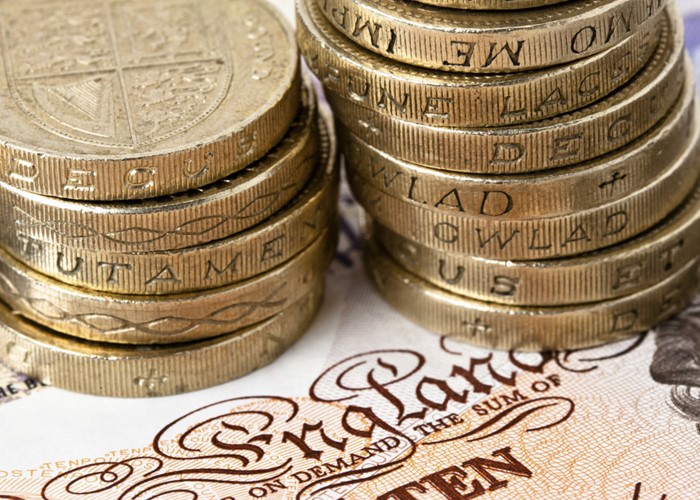Get a personal loan for just 6%

Personal loan rates have taken another tumble, with the market-leading deal now charging just 6%.
If you don't have enough money set aside in savings to cover your next major purchase, then what are the best ways to pay for a car, holiday, home improvements or wedding? You could patiently save the money, but this takes time and effort. Also, this approach is no use if you need the item right away.
One of the best alternatives is to shop around for a cheap unsecured personal loan. Unlike a mortgage, a personal loan is not secured against your home. In other words, if you can't keep up repayments, then your home isn't at risk.
However, one of the biggest mistakes borrowers make is to approach their bank for a loan. Banks take full advantage of their captive customers by over-charging them for loans - in some cases, borrowing from your bank can mean paying thousands of pounds in extra interest and charges.
What's more, when the credit crunch arrived in August 2007, it caused upheaval in the loan market. As the lowest loan rates were withdrawn and lenders pulled out, loan rates soared. With credit harder and more expensive to get, more and more borrowers were turned down for personal loans.
Winning the rate war
However, as the UK economy recovers and banks rebuild their financial strength, a new rate war has broken out among lenders. Today, if you're a borrower with a flawless credit history, then banks are practically falling over themselves to win your custom.
As a result, leadership of the loans market has changed hands several times this year, as lenders such as Nationwide BS and Santander battle to win new borrowers. Also, Britain's biggest supermarkets have been muscling in, with M&S, Sainsbury's and Tesco all offering low-rate loans.
Thanks to this cut-throat competition, it's now possible to borrow for several years at fixed rates as low as 6% APR. As a result, loan rates have fallen to their lowest level in almost five years.
Best loans for borrowing £10,000
To show you how cheap loans have recently become, I have put together the table below covering the cheapest deals to borrow £10,000 for five years, without rip-off payment protection insurance (PPI).
These best buys are ranked by total amount repayable (TAR), with the cheapest first:
|
Lender |
TAR |
Monthly repayment |
Interest rate (% APR) |
Notes |
| Derbyshire Building Society | £11,555.40 | £192.59 | 6.0% | |
|
Marks & Spencer Money |
£11,555.40 |
£192.59 |
6.0% |
For homeowners aged 30 and over |
|
first direct |
£11,581.80 |
£193.03 |
6.1% |
For existing customers and those opening a new current account |
|
£11,581.80 |
£193.03 |
6.1% |
For shoppers with a Nectar card used at Sainsbury's in the past six months |
|
|
£11,581.80 |
£193.03 |
6.1% |
|
|
|
£11,608.20 |
£193.47 |
6.2% |
For existing customers and those opening a new current account |
What's interesting about this table is just one of the UK's 'Big Four' banks (Barclays, HSBC, Lloyds Banking Group and Royal Bank of Scotland) makes this list, whereas three retailers feature.
All of these loans are highly competitive, with interest rates ranging from 6.0% APR at Derbyshire BS to 6.2% APR at mega-bank HSBC. To borrow £10,000 over 60 months will cost you between £1,555.40 and £1,608.20 in interest, which is far less than you'd pay at the other high-street banks.
However, two of these loans -- from first direct and its parent HSBC -- are available only to existing customers or those who open a new current account with these banks. Also, the M&S loan is unsuitable for tenants and young adults, as it is available only to homeowners aged at least 30.
Top tips to choose a loan
Before you rush off to bag a bargain personal loan, take these tips to heart:
- Don't compare loans using the APR (annual percentage rate), as this figure can be manipulated. Instead, the best way to evaluate loans is by checking the TAR (total amount repayable). And remember the typical rate advertised only has to be offered to 51% of borrowers - you may get offered a higher rate if your credit score is not quite as good.
- Some loans include application fees, which should be included in the TAR. However, always check for any additional fees, such as any extra charge for an instant transfer into your bank account.
- Never buy PPI, as this over-priced insurance against accident, sickness and unemployment has been thoroughly discredited.
- Check for exit penalties for early repayment, as most loans charge at least one month's extra interest for early settlement.
- Be sensible: borrow only what you need and don't be tempted to bump up your loan, as this will boost your interest bill. However, rounding up your loan to, say, £5,000, £7,500, £10,000 or £15,000 may give you access to a cheaper rate and lower interest bill overall.
Finally, why spend hours trudging from bank to bank, when a one-minute search will reveal the best deals? The best way to find your perfect personal loan is to compare loans online!
More: Find the perfect personal loan | These homes may soon be worthless | Virgin Broadband: How Richard Branson and Usain Bolt tricked me
Comments
Be the first to comment
Do you want to comment on this article? You need to be signed in for this feature